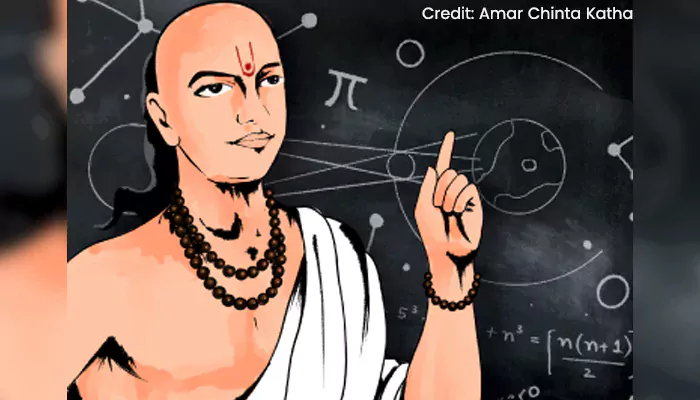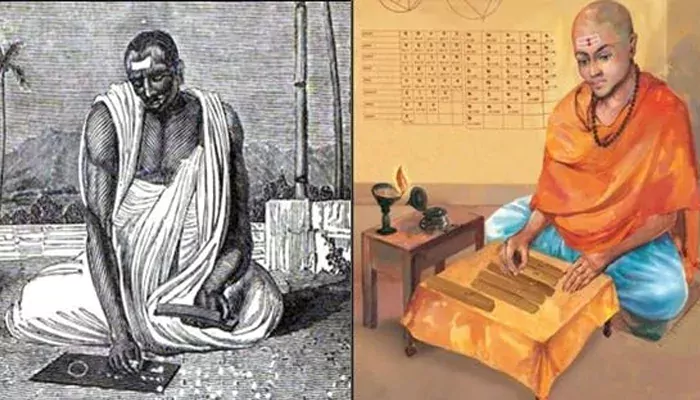
In the 5th century, a radical idea took shape in the mind of Aryabhata—an idea so deceptively simple it would one day underpin the digital age
At first glance, it was merely a circle. A hollow dot. A mark on parchment. Yet behind that small symbol lay a seismic shift in human understanding. Around 500 CE, an Indian mathematician named Aryabhata—born during the height of the Gupta era, India’s golden age of science—laid the intellectual groundwork for what we now recognise as zero.
Long before the West grasped the power of nothingness, Aryabhata saw it not as absence but as a force that could revolutionise mathematics, philosophy, and the very framework of human logic.
While ancient Babylonians and Mayans used placeholder symbols, it was in India that zero was conceived as a distinct number—an idea both abstract and revolutionary.
Aryabhata’s magnum opus, the Āryabhaṭīya, features a positional number system that implicitly includes zero, although he did not yet assign it a symbol. His true brilliance lay in diverging from older number systems that relied on symbols with fixed values. Instead, he introduced a base-10 positional system where the position of a digit determined its value—a framework that necessitated zero to distinguish, for example, 105 from 15.

(Credit: Zee News)
He also calculated π (pi) to an extraordinary level of accuracy, proposed the rotation of the Earth, and provided sine tables that later became fundamental to trigonometry. But without zero, none of these achievements could have been scaled. It was the spark; the silent engine behind his mathematics.
A century later, the conceptual breakthrough Aryabhata introduced was built upon by Brahmagupta, a 7th-century polymath writing in Sanskrit. In his influential work Brahmasphutasiddhanta, he did the unthinkable—he defined zero.
Brahmagupta called it shunya, meaning void or emptiness, and established rules for arithmetic operations involving zero and negative numbers—an unprecedented intellectual advancement at the time.

(Credit: Art Station )
For instance:
A number minus zero remains unchanged.
A debt subtracted from zero becomes a fortune.
The product of zero and any number is zero.
He even addressed the riddle of zero divided by zero, though his answer ('zero') differs from today’s view of it being “indeterminate.” Still, the sophistication of his reasoning places him centuries ahead of the rest of the world.
India’s cultural acceptance of nothingness was not novel. Ideas of shunyata in Buddhism and nirguna (formless divinity) in Hinduism had long examined the metaphysics of absence. The ancient symbol bindu—a dot within a circle—represented both the origin of creation and a point of transcendental stillness.
It is no coincidence, then, that India was the birthplace of zero. Where other civilisations feared emptiness, Indian thought explored it.
The earliest physical evidence of zero as a numeral appears in the Chaturbhuj Temple in Gwalior, dated to 876 CE. The number 270 is inscribed on its wall, with a round symbol for zero that closely resembles the one we use today.
From there, the concept travelled east to China and westward through the Islamic world. Arab mathematicians preserved and expanded upon Indian numerals—known today as “Hindu-Arabic numerals”—and eventually passed them to Europe. However, acceptance was slow. In medieval Europe, zero was condemned by some as the mark of heresy—an unsettling symbol of nothingness in a world dominated by absolutes.

(Credit: Medium )
It wasn’t until the 12th century that the Italian mathematician Fibonacci praised Indian mathematics and introduced the numeral zero to Europe through his book Liber Abaci.
Zero may represent nothing, but it laid the groundwork for everything. Without it, algebra cannot exist. Without algebra, there is no calculus. Without calculus, there are no bridges, rockets, or algorithms. And without binary—built on the dual pillars of zero and one—there is no computer, no internet, no modern civilisation.